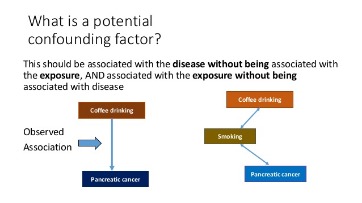(Well, it’s a bit of a confusing concept, however that’s not the worst part). An strategy to estimation is required that, unlike OLS applied to eqn , doesn’t ignore the presence of, and potential SS bias because of, Cu. In the following part, methods that appropriate for choice bias by way of the inclusion of a management operate which accounts for Cu are mentioned. Such control features additionally exploit sample variation in the IV to get rid of SS bias due to correlation between Cu and S . than could be thought of with stratification or matching, but it has the drawback that a model must be created , and this model could not fit the info nicely.

Traditional input variable adjustment failed to sufficiently control for confounds in simulated and real datasets. This is because enter variable adjustment can not remove all confounding results that can be realized by machine learning methods, as we show illustrative examples and in the simulated data. This consists of cross-validated input adjustment as proposed by (Snoek et al. 2019) and adjustment using a location and scale adjustment mannequin as used in ComBat (Fortin et al. 2017). Therefore, it is potential that some of the beforehand revealed machine studying outcomes are driven by insufficiently adjusted confounding as an alternative of the sign of curiosity. Machine studying strategies susceptible to this problem embrace all nonlinear machine studying strategies and linear machine learning methods which are fitted optimizing a unique operate than a regression used for enter adjustment, similar to help vector machines.
Three Methods For Minimizing Confounding In The Research Design Phase
where weight was set to 3, four, and 5 representing low, medium, and excessive confounding, because the outcome variable was created solely as a perform of age, there should be no sign within the knowledge after adjustment for age. The mannequin used to perform confound adjustment can be estimated utilizing all obtainable data, however, in some cases, it has been beneficial in the literature to use only a subset of the information to suit the confound adjustment mannequin. However, as was identified by Linn et al. , this procedure is not going to sufficiently take away the results of confounds, and thus it will produce biased results as illustrated in Figure four. This is because information from wholesome controls are insufficient to estimate the effect of confounds in subjects with a illness. It is essential to point out that – similar to the regression setting – this process ignores potential miscalibration of predictions, corresponding to systematic overconfidence or underconfidence of estimated probabilities.
Models and analyses used in such experiments must mirror the nested treatment structure. In public well being, researchers are sometimes restricted to observational research to find proof of causal relations. Experimental research is probably not potential for many technical, ethical, monetary, or different causes.
In human experiments, you would possibly choose topics of the identical age, sex, ethnicity, education, food plan, and so forth. Some extraneous variables could be controlled for by designing them out of the experiment. For example, you can put an equal variety of male and female individuals into the remedy and management teams. Similarly, you could be sure that the 2 groups are comparable in terms of the salary earned by individuals.
Lowering The Potential For Confounding
However, such a manual verify isn’t feasible for the big variety of variables commonly included in neuroimaging machine studying research. Another risk is to use numerous resampling or reweighting strategies to create a dataset the place the confounding variable just isn’t related to the end result (Pourhoseingholi et al. 2012; Rao et al. 2017; Chyzhyk et al. 2018). Since solely a subset of accessible subjects is used, this results in knowledge loss and highly variable estimates. Another problem of this approach is that the distribution of variables within the take a look at set no longer matches the distribution of the unique dataset or the population. For instance, when controlling for a intercourse effect within the machine learning prediction of Autism prognosis, resampling methods can be interpreted because the performance of the machine studying model in a inhabitants where intercourse just isn’t related to the autism diagnosis.
If you fail to account for them, you may over- or underestimate the causal relationship between your independent and dependent variables, or even find a causal relationship the place none exists. Failing to account for confounding variables could cause you to wrongly estimate the relationship between your unbiased and dependent variables. In your research design, it’s necessary to identify potential confounding variables and plan how you’ll scale back their impact. A confounding variable is related to each the supposed cause and the supposed impact of the examine.
The proper causal interpretation of the relations from fastidiously developed epidemiological studies is vital to the event of efficient measures of prevention. In counterbalancing, half of the group is measured under situation 1 and half is measured underneath condition 2. Negative confounding is when the noticed affiliation is biased toward the null. Positive confounding is when the observed association is biased away from the null.
So, for example, think about a research that is predicting toddler birth weight from maternal weight gain throughout being pregnant. Clearly an method to estimation is required that, unlike OLS, does not ignore the presence and potential bias of Cu. One such strategy exploits sample variation in a specific kind of variable (a so-referred to as IV) to remove bias as a result of correlation between Cu and X (Cu−bias as characterised in eqn ). ) include memorization of words inside grammatical class; time taken to complete issues within issue ranges.









More Stories
I Don’t Know The Way To Love Him
The Social Gradient In Stress And Depressive Symptoms Among Adolescent Ladies
Boston Celtics Vs Cleveland Cavaliers Odds & Matchup Stats